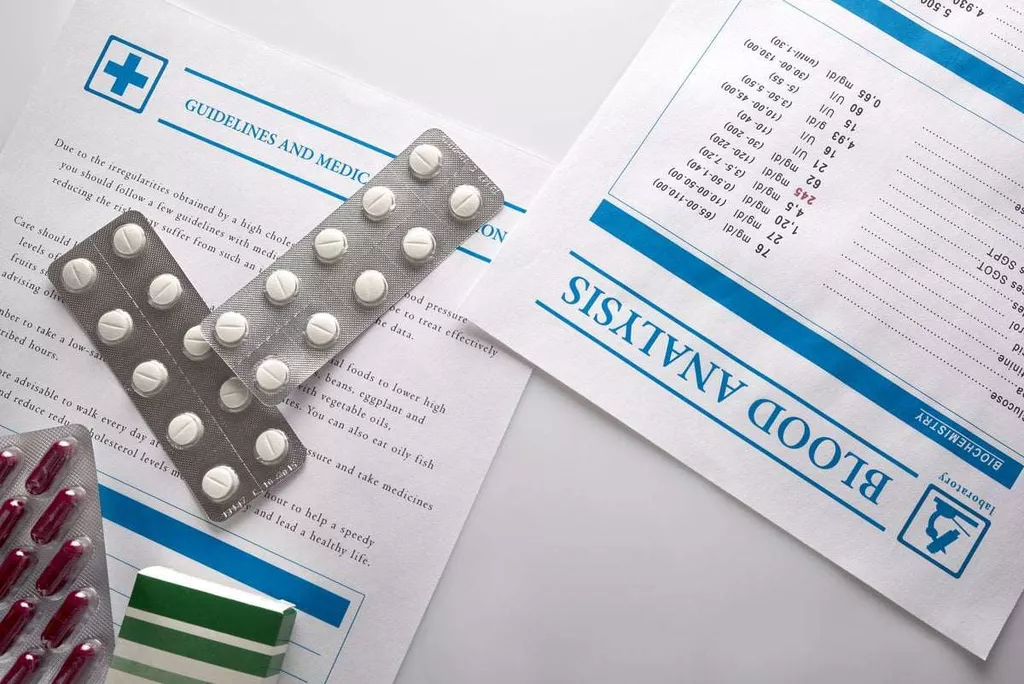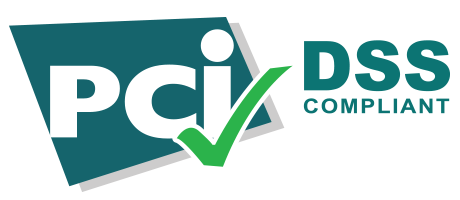Contents
Its items were informed by prior work on patient attitudes toward substance use screening . The TAPS Tool is a substance use screening and brief assessment instrument that was developed for use in primary care medical settings. It is one of the first screening instruments to provide rapid assessment of all commonly used substance classes, including illicit and prescription opioids, and is one of the only available screeners designed and validated in an electronic self-administered format . This secondary analysis of data from the TAPS Tool validation study describes the feasibility and acceptability of the myTAPS among primary care patients. Primary care settings often are the gateway to identifying undiagnosed or untreated behavioral health disorders through effective screening. Thus, primary care settings can play a critical role in reducing behavioral health disparities by identifying individuals at risk of substance use problems.

As the first steps in ensuring access to appropriate intervention or linkage to treatment services, screening and assessment are essential ingredients in quality care. It is widely believed that substance use problems are over represented in primary care settings, but providers lack the tools to effectively screen. Most of the patients seen in primary care are unlikely to seek treatment in the specialty behavioral health service system. Moreover, failure to identify unhealthy alcohol and other drug use can produce harmful medication interactions, resulting in significant clinical complications. Strengths of this study include the large sample, evaluation of both interviewer- and self-administered formats with randomized order, and inclusion of a drug use biomarker.
Module #1 – TAPS Tool Part 1 – Interviewer Version
Substance use risks calculated from the TAPS tool were compared with the reference standard, World Health Organization Alcohol, Smoking, and Substance Involvement Screening Test using confusion matrices. We calculated Areas Under the Curve of Receiver Operating Characteristics Curves to evaluate the TAPS tool’s validity. The TAPS-1 can identify unhealthy substance use in primary care patients with a high level of accuracy, and may have utility in primary care for rapid triage.

It is possible that participants were more reluctant to disclose substance use in a face-to-face interview than on a computer tablet,32 but that having the interviewer-administered questions first primed participants to subsequently reduce their level of candor. Another possibility is that interviewers clarified misunderstandings that could lead to false positives, and participants remembered these clarifications when taking the self-administered format. For the interviewer-administered TAPS, interviewers read the questions verbatim but were allowed to provide a brief clarification and explanation if requested. For both formats, participants responded under confidential research conditions, with the knowledge that the results would not enter their medical record. It is not known how patients’ willingness to disclose substance use might change under real-world practice conditions. The Tobacco, Alcohol, Prescription medications, and other Substance Tool consists of a 4-item screening for tobacco use, alcohol use, prescription medication misuse, and illicit substance use in the past year and brief assessment (modified version of the ASSIST-Lite (Ali et al., 2013)).
Participants
Research assistants collected information about prescription medications that participants reported taking medically as prescribed; oral fluid tests for those medications were not counted as positive. Given a short detection window for oral fluid testing , its comparison with self-reporting offers a conservative estimate of non-disclosure by permitting disconfirmation of self-reported abstinence on the TAPS-1. The myTAPS Tool would be feasible in most primary care clinical settings, and was well accepted by patients in this large and diverse sample of national institute on alcohol abuse and alcoholism niaaa adult primary care patients. However, primary care practices that choose this format should be prepared to offer assistance to some patients, particularly those who are older or have less than a high school level of education, and should have the capacity to screen using an interviewer-administered approach when required. Future studies should assess the acceptability and the feasibility of myTAPS screening when it is implemented in routine practice. Participants completed the TAPS tool in self- and interviewer-administered formats, in random order.
- DSM-5 criteria were assessed separately for tobacco, alcohol, marijuana, cocaine, methamphetamine, heroin, and non-medical use of prescription opioids, sedatives, and stimulants.
- One measure emerging as a valuable tool for assessing substance use risk in healthcare settings is the Tobacco, Alcohol, Prescription Medication, and other Substance use tool, a brief 4-item screener (McNeely et al., 2016).
- Participants completed the TAPS tool in self- and interviewer-administered formats, in random order.
- Cannabis-derived products containing cannabidiol with no or minimal levels of delta 9-tetrahydrocannabinol are widely available in the United States and use of these products is common among young adults and those who use marijuana.
- DSM-5 SUD criteria were determined via the modified Composite International Diagnostic Interview.
- Prior studies have similarly shown that electronic and self-administered questionnaires may be more difficult for primary care patients having less computer familiarity or lower literacy .
Developing and sharing acute care provider education to promote the importance of substance-use screening with a specific focus on polysubstance use . We will develop provider-facing tools to support the implementation of substance use screening. The Recovery Village aims to improve the quality of life for people struggling with substance use or mental health disorder with fact-based content about the nature of behavioral health conditions, treatment options and their related outcomes.
Performance of the TAPS-1
This study demonstrated the validity of the TAPS-1 in both interviewer- and self-administered formats. An advantage of the self-administered version may be slightly higher disclosure of substance use , low staff burden, and the potential for seamless integration of screening results into the electronic medical record. Ultimately, the choice of which format to deploy will depend on workflow considerations that are to some extent unique to each primary care practice. The myTAPS required more time to complete than the interviewer format, but as a self-administered screener, , requiring a median time of 4.0 min, myTAPS would be feasible in most primary care settings. This is comparable to the rate of assistance found in a study of electronic self-administered formats of the Single-Item Screening Questions for alcohol and drugs, in which 29% of participants needed assistance , but higher than what has been reported for some other electronic self-administered screening tools.

This was a diverse sample with white, African American, and Hispanic participants recruited from five primary care sites across the Eastern United States. However, the extent to which how much does a drug and findings may be generalized to other US regions or other countries is unknown. We determined unhealthy substance use via a structured interview with items mapping to DSM-5 criteria.
The goal of this study was to validate the performance of the Tobacco, Alcohol, Prescription medication, and other Substance use tool in community pharmacy settings compared to a reference-standard substance use assessment. Research assistants consecutively approached patients in each clinic’s waiting area and invited them to participate in an anonymous screening for a health study. Patients who agreed met with the research assistant in a private office and completed the TAPS tool in two formats sequentially (self-administered on an iPad, and interviewer-administered), with administration order determined at random. After patients had completed both formats, a battery of reference measures assessing substance use and related problems was administered by the research assistant.
Patterns and correlates of cannabidiol product and marijuana co-use in a sample of U.S. young adults
Individuals were excluded if they could not understand spoken English or were physically unable to use a tablet computer. Research assistants consecutively approached patients in the waiting room to invite them to participate, and obtained verbal informed consent. Institutional review boards of the sites involved in the study approved all study procedures. For problem use of illicit and prescription drugs, sensitivity ranged from 0.82 for marijuana to 0.63 for sedatives; specificity was 0.93 or higher. For identifying any substance use disorder (at a cutoff of 2+), sensitivity was lower.
While some patients appreciate the privacy of self-administered screening, others may prefer the human touch of an interviewer . Overall, myTAPS screening was feasible and well accepted by adult primary care patients. Clinics adopting electronic screening should be prepared to offer assistance to some patients, particularly those who are older or less educated, and should have the capacity to use an interviewer-administered approach when required. The Tobacco, Alcohol, Prescription Medication, and Other Substance use tool is a combined two-part screening and brief assessment developed for adult primary care patients.
However, approximately 10% of the sample refused the oral fluid test, which could be for various reasons (e.g., lack of time, concerns about confidentiality, or lack of candor in self-report). Patients may have trouble reading or understanding the questions, or difficulty navigating the computer interface. While electronic self-administered screening tools can incorporate audio guidance to accommodate low literacy users, some patients may still have difficulty operating the technology .
Tobacco Use Resources
To cite this article, please review & use the official citation provided by the journal. South Carolina has experienced a surge in fatal overdoses, primarily fueled by opioid-involved overdose deaths. The datasets used and/or analysed during the current study are available from the corresponding author or from the NIDA Center for the Clinical Trials Network on reasonable request.
TAPS takes under five minutes to administer and is a proven way to identify patients who have substance use disorders and other related risks. If patients are found to have a SUD or to be at a higher risk, the medical provider has the option to refer them for more specialized care, including addiction treatment. Thus, the TAPS assessment tool—a 2-part questionnaire—was alcohol toxicity and withdrawal created to bridge the gap in screening for substance use disorders in primary care. This revised version of the CRAFFT screening tool incorporates changes that enhance the sensitivity of this well-validated and widely-utilized adolescent substance use screening tool to accurately identify adolescents at risk for a substance use disorder.
One of the challenges faced by healthcare providers is being able to effectively screen for substance abuse among patients. Some patients may only have a higher risk of a substance use disorder and could use prevention strategies while others have already crossed the line into a substance use disorder. The TAPS tool is a brief, two-part assessment of substance use and misuse in primary care patients that can be self-administered or administered through clinician interview. To assess the performance of the TAPS tool, the researchers consecutively recruited 2000 adult patients from 5 adult primary care clinics in the United States.
Because the WMH-CIDI does not include many of the DSM-5 tobacco use disorder criteria, tobacco use disorder was assessed using the language from the WMH-CIDI drug section. To facilitate direct comparison with the categories queried by the TAPS-1, we calculated DSM-5 scores for tobacco, alcohol, any illicit drugs, and any prescription medications used non-medically. We examined unhealthy substance use at sub-diagnostic “problem use” (≥1 DSM-5 criteria), mild SUD (≥2 DSM-5 criteria) and moderate-to-severe SUD (≥4 DSM-5 criteria) thresholds. The aims of our analysis were to determine the feasibility and acceptability of myTAPS among primary care patients, including in specific subpopulations that may have greater difficulty using an electronic self-administered screening tool.
The tool’s first-stage screening component (TAPS-1) consists of four items asking about past 12-month use for four substance categories, with response options of never, less than monthly, monthly, weekly, and daily or almost daily. In the past, there have not been many standardized or reliablesubstance abuse assessment tools. The NIDA’s new scientifically-validated online screening tool can help a healthcare provider identify a patient’s substance abuse problem. In a study of the National Drug Abuse Treatment Clinical Trials Network, between August 2014 and April 2015, 2000 participants, from five primary care clinics located in urban and suburban areas in the Eastern U.S., completed the TAPS Tool validation study. Eligible individuals were adults who were current patients of one of the participating clinics.
The study was approved by the institutional review boards of Friends Research Institute and participating academic institutions, with a waiver of written consent, because this would be the only identifiable link to the data. Advancing provider-facing referral to treatment and educational intervention resources to include local treatment option tools/resources for coordination of care with community resources and substance-use disorder treatment providers. We will collaborate with existing partners and experts to compile and/or develop tools to support improved utilization of existing SUD treatment resources and effective patient education strategies. Since the majority of people who suffer from a substance use disorder fail to recognize that there is a problem, an independent assessment by a trusted healthcare provider could be invaluable. This guidance provides recommendations for screening pregnant patients for substance use disorder to enhance the well-being of the maternalfetal dyad. This screening device is often used as a way to begin discussion about drug and alcohol use.














